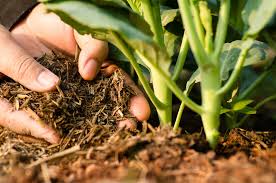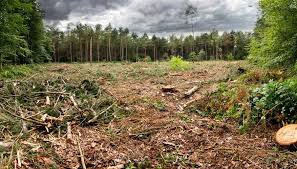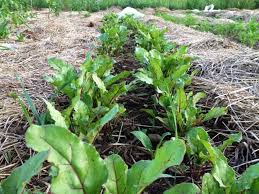Environmental impacts of continuous cropping in agriculture can be profound and multifaceted, affecting soil health, biodiversity, water quality, and greenhouse gas emissions. Continuous cropping, or growing the same crop on the same land year after year, has become a common practice to maximize yields and profits. However, while this approach can lead to short-term economic gains, it can also cause significant long-term environmental degradation.
One of the primary concerns associated with continuous cropping is soil depletion. Growing the same crop repeatedly can lead to a decline in soil nutrients, particularly if crop rotation or cover cropping practices are not implemented. Crops like corn and soybeans require specific nutrients, such as nitrogen and phosphorus.
Over time, continuous cropping without adequate replenishment of these nutrients can result in nutrient-deficient soils, which not only reduces crop yields but also can necessitate increased use of synthetic fertilizers. This over-reliance on chemical inputs can further degrade soil health and lead to the leaching of nutrients into nearby water bodies, contributing to issues like algal blooms and water pollution.
Additionally, continuous cropping can disrupt soil structure and microbial diversity. Soil organisms play a crucial role in nutrient cycling, organic matter decomposition, and soil fertility. However, when the same crop is planted repeatedly, the diversity of soil microorganisms may decrease, leading to a less resilient soil ecosystem. This can result in increased susceptibility to pests and diseases, prompting farmers to rely more heavily on chemical pesticides and herbicides, which can further harm beneficial soil organisms and lead to pesticide resistance.
Biodiversity is another significant concern with continuous cropping. Monoculture practices can reduce habitat availability for various organisms, leading to a decline in both plant and animal species. This loss of biodiversity can disrupt local ecosystems and diminish the resilience of agricultural systems to environmental stressors, such as climate change and extreme weather events. Moreover, reduced biodiversity can negatively impact ecosystem services, such as pollination and natural pest control, which are essential for sustainable agriculture.
Water quality is also affected by continuous cropping practices. The heavy use of fertilizers and pesticides can lead to runoff during rain events, contaminating nearby streams, rivers, and lakes. This pollution can cause significant harm to aquatic ecosystems and drinking water supplies, resulting in increased treatment costs for municipalities and potential health risks for communities. Furthermore, the depletion of soil moisture due to continuous cropping can lead to increased irrigation demands, straining local water resources, especially in areas already experiencing water scarcity.
Finally, continuous cropping can contribute to climate change through the emission of greenhouse gases. Practices such as tillage can release carbon stored in the soil, while the excessive use of fertilizers can produce nitrous oxide, a potent greenhouse gas. The cumulative effects of these practices can exacerbate global warming and its associated impacts on agriculture, such as altered growing seasons and increased pest pressures.
Soil Health and Fertility Decline

1. Nutrient Depletion: Continuous cropping can lead to the depletion of essential nutrients in the soil. When the same crop is grown repeatedly, it continuously extracts specific nutrients, resulting in imbalances and deficiencies that can negatively affect crop yields.
2. Soil Structure Degradation: The constant tillage and crop production associated with continuous cropping can degrade soil structure. This degradation reduces the soil’s ability to retain moisture and nutrients, leading to further declines in fertility and productivity.
3. Soil Microbial Diversity: Continuous cropping often disrupts the natural balance of soil microorganisms. The lack of crop diversity can lead to a decline in beneficial microbial populations, which are vital for nutrient cycling and soil health.
4. Increased Soil Acidity: Repeated cropping can contribute to soil acidification, particularly when synthetic fertilizers are heavily used. Lower pH levels can further reduce nutrient availability and harm beneficial soil organisms, compounding fertility issues.
5. Long-term Implications for Agriculture: The decline in soil health and fertility resulting from continuous cropping can have serious long-term implications for agricultural sustainability. Reduced soil productivity can lead to decreased crop yields, forcing farmers to rely more heavily on chemical inputs, which may create a cycle of dependency.
Increased Soil Erosion and Degradation
1. Erosion Rates: Continuous cropping can significantly increase soil erosion rates. The absence of cover crops and crop rotation can leave the soil exposed to wind and water erosion, leading to the loss of topsoil and valuable nutrients.
2. Degradation of Soil Resources: The constant disturbance of soil due to tillage practices associated with continuous cropping can lead to the degradation of soil resources. This includes the loss of organic matter, which is essential for maintaining soil structure and fertility.
3. Impact on Water Quality: Increased erosion can result in sedimentation in nearby water bodies, leading to poor water quality. Sediments can carry pollutants, including fertilizers and pesticides, which can have detrimental effects on aquatic ecosystems.
4. Loss of Biodiversity: Soil erosion and degradation can reduce the habitat for various soil organisms and beneficial insects, leading to a decline in biodiversity. This loss can disrupt ecosystem functions, such as nutrient cycling and pest control.
5. Addressing Erosion Challenges: To mitigate soil erosion associated with continuous cropping, practices such as cover cropping, reduced tillage, and implementing buffer zones can be adopted. These practices help stabilize the soil and protect it from erosion.
Water Resource Depletion
1. Increased Water Usage: Continuous cropping often requires higher amounts of irrigation to maintain crop yields, especially in regions with limited rainfall. This increased demand for water can strain local water resources and lead to over-extraction of groundwater.
2. Diminished Water Quality: Intensive irrigation practices associated with continuous cropping can result in nutrient leaching and runoff, leading to the contamination of nearby water bodies. High nutrient levels in water can cause eutrophication, harming aquatic ecosystems.
3. Impact on Hydrological Cycles: Continuous cropping can alter local hydrological cycles by increasing evaporation rates and reducing water infiltration into the soil. This alteration can lead to reduced groundwater recharge and affect the overall availability of water resources.
4. Challenges in Drought-Prone Areas: In areas susceptible to drought, continuous cropping can exacerbate water scarcity issues. The reliance on irrigation without adequate water management can lead to severe consequences for both agriculture and local communities.
5. Sustainable Water Management Practices: Implementing efficient irrigation techniques, such as drip irrigation and rainwater harvesting, can help alleviate water resource depletion. Farmers should also consider crop selection based on water availability to promote sustainable water usage.
Read Also: Pests of Stored Products and Damages Caused
Loss of Biodiversity and Habitat Destruction

1. Decline in Plant Diversity: Continuous cropping often results in a monoculture system, where only one or a few crop species are grown repeatedly. This practice reduces the variety of plants in the ecosystem, leading to a decline in overall biodiversity. The absence of diverse plant species can limit the resilience of the agricultural system to environmental changes and pests.
2. Impact on Wildlife: The conversion of natural habitats into monoculture fields for continuous cropping disrupts local wildlife habitats. Many organisms, including birds, insects, and mammals, rely on diverse ecosystems for food and shelter. As these habitats are destroyed, wildlife populations may decline, leading to ecological imbalances.
3. Soil Biodiversity Loss: Continuous cropping can harm soil biodiversity by reducing the variety of microorganisms, fungi, and insects that thrive in healthy soils. The decline of these organisms can hinder nutrient cycling and soil health, ultimately impacting crop yields.
4. Increased Vulnerability to Invasive Species: The lack of biodiversity in continuous cropping systems can make ecosystems more susceptible to invasive species. These species can outcompete native flora and fauna, further diminishing biodiversity and disrupting ecosystem functions.
5. Promoting Biodiversity Conservation: To combat the loss of biodiversity, incorporating diverse cropping systems, such as intercropping and agroforestry, can help restore ecological balance. These practices enhance biodiversity and provide habitats for beneficial organisms, improving overall farm resilience.
Pest and Disease Pressure
1. Increased Pest Populations: Continuous cropping can lead to the build-up of specific pests that thrive on the same crop year after year. With fewer natural enemies in a monoculture system, pest populations can increase, resulting in higher infestations and crop damage.
2. Disease Proliferation: The repeated cultivation of the same crops can create a conducive environment for plant diseases to thrive. Pathogens that target specific crops may become more prevalent, leading to severe crop losses and reduced yields.
3. Over-Reliance on Chemical Control: The pressure from pests and diseases in continuous cropping systems often results in increased pesticide and fungicide use. This over-reliance on chemical control can lead to pesticide resistance, harming beneficial organisms and further compounding pest problems.
4. Integrated Pest Management Challenges: Continuous cropping systems may complicate the implementation of integrated pest management (IPM) strategies, as the lack of crop diversity limits the natural pest control options available to farmers.
5. Adopting Sustainable Pest Management Practices: To address pest and disease pressures, farmers can implement diverse cropping systems, introduce beneficial insects, and practice crop rotation. These methods can help break pest cycles and enhance overall crop resilience.
Impact on Carbon Sequestration
1. Reduced Soil Organic Matter: Continuous cropping can lead to a decline in soil organic matter, which is crucial for carbon sequestration. The constant disturbance of soil through tillage and the lack of cover crops can reduce the soil’s ability to store carbon, contributing to greenhouse gas emissions.
2. Contribution to Climate Change: The reduction in carbon sequestration associated with continuous cropping contributes to climate change. The release of stored carbon into the atmosphere increases greenhouse gas concentrations, exacerbating global warming and its associated impacts.
3. Importance of Cover Crops: Implementing cover crops in continuous cropping systems can improve soil organic matter and enhance carbon sequestration. Cover crops capture carbon during their growth, helping to mitigate the effects of climate change.
4. Long-Term Carbon Management Strategies: Farmers can adopt practices such as no-till farming, agroforestry, and diverse cropping systems to enhance carbon sequestration in soils. These strategies can help build soil health while contributing to climate change mitigation efforts.
5. Monitoring and Reporting Carbon Stocks: Regular monitoring of soil carbon stocks in continuous cropping systems is essential for understanding the long-term impacts of these practices on carbon sequestration. This data can guide management decisions and improve sustainability efforts.
Nutrient Imbalance and Fertilizer Dependency
1. Soil Nutrient Depletion: Continuous cropping can lead to nutrient depletion in soils as the same crops extract specific nutrients repeatedly without sufficient replenishment. Over time, this depletion can lead to nutrient imbalances, negatively impacting crop health and yields.
2. Increased Chemical Fertilizer Use: To compensate for nutrient depletion, farmers often resort to synthetic fertilizers, leading to increased dependency on chemical inputs. This reliance can create a cycle of soil degradation and further nutrient imbalances, as synthetic fertilizers can disrupt soil microbial communities.
3. Environmental Pollution: The overuse of fertilizers in continuous cropping systems can result in nutrient runoff, polluting nearby water bodies and leading to issues such as eutrophication. Excessive nutrients in water can harm aquatic ecosystems and degrade water quality.
4. Importance of Balanced Fertilization Strategies: Implementing balanced fertilization strategies that include organic amendments and crop rotation can help mitigate nutrient imbalances. These practices promote soil health and reduce dependency on synthetic fertilizers.
5. Adopting Sustainable Nutrient Management Practices: Farmers can improve nutrient management by utilizing soil testing, organic amendments, and integrated nutrient management practices. These approaches can enhance soil fertility, reduce environmental impacts, and support long-term sustainability in agriculture.
Read Also: 7 Medicinal Health Benefits of Daffodils (Narcissus Plant)
Changes in Microbial Activity and Soil Structure

1. Alteration of Soil Microbial Communities: Continuous cropping can disrupt the balance of microbial communities in the soil. The repeated planting of the same crop can favor specific microbial species while harming others, leading to a decline in overall microbial diversity. This reduction in diversity can limit the soil’s ability to perform essential functions, such as nutrient cycling and organic matter decomposition.
2. Soil Structure Degradation: The constant tillage associated with continuous cropping can lead to soil compaction and the breakdown of soil aggregates. This degradation results in poor soil structure, reducing water infiltration, aeration, and root penetration. Compacted soils can hinder plant growth and lead to decreased yields.
3. Impact on Soil Fertility: Changes in microbial activity due to continuous cropping can affect soil fertility. Beneficial microbes that aid in nutrient availability may decline, leading to nutrient deficiencies for crops. This can necessitate increased fertilizer application to achieve desired yields, further contributing to soil degradation.
4. Soil Organic Matter Dynamics: Continuous cropping practices often result in a decline in soil organic matter, which is crucial for maintaining soil health. The reduction in organic matter can negatively impact microbial populations and overall soil fertility, creating a cycle of declining soil health.
5. Encouraging Diverse Soil Microbial Communities: To maintain healthy microbial activity and soil structure, integrating crop rotation and cover cropping can help enhance microbial diversity. These practices support a more balanced ecosystem, improving soil health and crop productivity.
Altered Hydrological Cycles
1. Changes in Water Retention: Continuous cropping can alter the natural hydrological cycles in agricultural landscapes. The loss of diverse root systems and organic matter reduces the soil’s capacity to retain water, leading to increased runoff and reduced water availability for crops.
2. Increased Risk of Soil Erosion: The lack of vegetation cover in continuous cropping systems can heighten the risk of soil erosion. Without diverse crops or cover crops to stabilize the soil, heavy rains can wash away the topsoil, resulting in nutrient loss and reduced soil fertility.
3. Impact on Groundwater Recharge: Continuous cropping can interfere with groundwater recharge processes. The reduction in water infiltration due to compacted soil and decreased organic matter can limit the ability of water to percolate through the soil, negatively impacting local aquifers and water supplies.
4. Changes in Microclimates: Altered hydrological cycles can lead to changes in local microclimates. Reduced moisture retention and increased evaporation can create drier conditions, impacting plant growth and the overall agricultural ecosystem.
5. Implementing Water Conservation Techniques: To mitigate the impacts of altered hydrological cycles, farmers can adopt practices such as conservation tillage, cover cropping, and agroforestry. These techniques can improve water retention, reduce runoff, and enhance soil health, ultimately supporting sustainable farming systems.
Climate Change Implications
1. Contribution to Greenhouse Gas Emissions: Continuous cropping practices can contribute to increased greenhouse gas emissions. The reliance on synthetic fertilizers, soil degradation, and reduced organic matter can lead to higher carbon dioxide and nitrous oxide emissions, exacerbating climate change.
2. Increased Vulnerability to Climate Variability: Monoculture systems are often less resilient to climate variability, such as droughts or heavy rainfall. The lack of crop diversity can make systems more susceptible to climate-related stressors, resulting in significant crop losses.
3. Impact on Ecosystem Services: Climate change implications from continuous cropping can disrupt vital ecosystem services, such as pollination, pest control, and soil health. These disruptions can have cascading effects on agricultural productivity and environmental sustainability.
4. Necessity for Adaptive Strategies: The changing climate requires adaptive strategies in agricultural practices. Farmers must consider climate-smart approaches that enhance resilience, such as diversifying crops and implementing sustainable land management practices.
5. Promoting Research and Innovation: Research into climate-resilient crops and sustainable farming practices is crucial to mitigate the impacts of continuous cropping on climate change. Innovations in farming technology and practices can support farmers in adapting to changing climatic conditions.
Strategies for Sustainable Crop Rotation
1. Implementing Diverse Crop Rotations: One effective strategy for enhancing sustainability in agriculture is implementing diverse crop rotations. By alternating different crops in a systematic manner, farmers can improve soil health, disrupt pest cycles, and increase overall productivity.
2. Utilizing Cover Crops: Incorporating cover crops during the off-season can enhance soil structure, prevent erosion, and promote microbial diversity. Cover crops can also improve nutrient cycling, providing organic matter that benefits subsequent cash crops.
3. Rotating Deep and Shallow-Rooted Crops: Integrating deep-rooted crops with shallow-rooted ones can optimize nutrient and water use efficiency. Deep-rooted crops can access nutrients from lower soil layers, while shallow-rooted crops can utilize surface nutrients effectively.
4. Implementing Integrated Pest Management (IPM): Incorporating IPM strategies into crop rotation practices can help manage pest populations sustainably. By diversifying crops, farmers can reduce the prevalence of pests and diseases that thrive in monoculture systems.
5. Educating Farmers on Sustainable Practices: Providing education and resources on sustainable crop rotation practices can empower farmers to adopt these strategies effectively. Workshops, extension services, and training programs can facilitate the sharing of knowledge and improve agricultural sustainability.
Do you have any questions, suggestions, or contributions? If so, please feel free to use the comment box below to share your thoughts. We also encourage you to kindly share this information with others who might benefit from it. Since we can’t reach everyone at once, we truly appreciate your help in spreading the word. Thank you so much for your support and for sharing!
Read Also: Relationship Marketing Process and Approaches to the Study of Marketing






